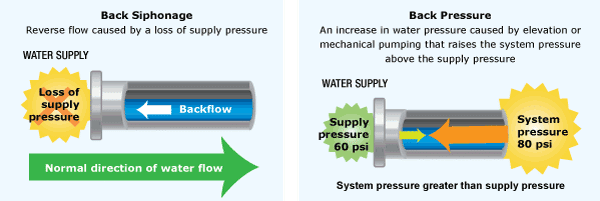Water Backflow Issue & How To Prevent It
Are you experiencing a reversal of the flow of water in your home? What you’re experiencing is called a water backflow.
A water backflow is one of the most serious problems when it comes to plumbing as it may lead to water contamination if not prevented. It may also cause a huge mess.
In this article, you will know more about the water backflow issue & how to prevent it.
Types Of Water Backflow

The two types of backflow are Back Pressure Backflow and Back Siphonage Backflow. Backpressure backflow happens if downstream pressure from an undrinkable source of water becomes stronger than the main source. Backpressure backflow may be a result of two things:
- Heat expansions by boilers or pumps can cause an increase in downstream pressure which will lead to backpressure backflow.
- Line flushing, firefighting, or a break in the waterline may cause a reduction in potable water pressure which will then lead to backflow.
While on the other hand, back-siphonage backflow is caused by negative pressure in the line which will result in a vacuum. Due to the vacuum, unclean water may contaminate the clean water supply. Similar to backpressure backflow, back siphonage backflow can be caused by breaks in the waterline, firefighting, or even from construction.
Hazards Of Backflow
Contamination is the main reason why a backflow is hazardous. Clean water has been a part of our daily lives and has already become necessary for our everyday survival. Contamination in water sources will lead to the spread of germs and bacteria as well as pollutants that when ingested will make your family sick.
Prevention
A cure isn’t always the best thing for certain situations, especially for water backflows. Once your water source is contaminated, it would lead to lots of time and money wasted for something you  can actually prevent from happening. Two ways are commonly used to prevent a water backflow:
can actually prevent from happening. Two ways are commonly used to prevent a water backflow:
- Air Gaps are one of the most common ways to prevent backflow, however, there are instances wherein there will be not enough space for a gap. In case of that situation, a backflow preventer valve would be of more use.
- Backflow Preventor Valves are installed on areas in the plumbing system where it is most at risk for contamination. Preventor valves should be checked regularly.
For more information on how to use air gaps and backflow preventers, and for all your plumbing needs and emergencies, contact us directly at 778-397-4850 or schedule an appointment here.

